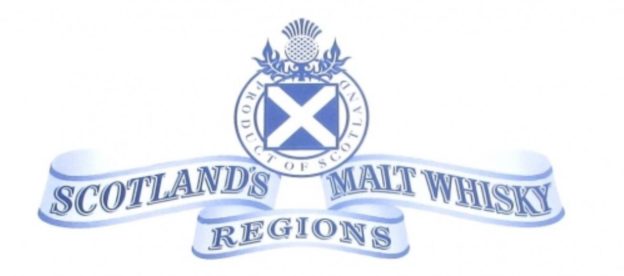The motherland of Single Malt Whisky is the Scottish Highlands which also encompass the Speyside and Island regions, the home of the majority of Scottish distilleries today. The total number fluctuates as new distilleries come online and older sites are shut down. The terms are somwhat interchangably used but as a rule:
- A “mothballed” or “silent” distillery is one that has been closed due to surplus of production but could be resurrected (Such as the museum distillery Dallas Dhu)
- A “closed” distillery refers a surviving site which has been put to another use but could be resurected (such as Parkmore or Cambus)
- A “lost” distillery refers to one where the site is gone and should be considered gone for good as there is no chance of resuming production (Such as the Littlemill or Imperial distilleries)
The regions of Scotland are generally divided as:
Lowlands
The area from the Scottish border to the Edinburgh-Glasgow line. Single Malt Whiskys from the Lowlands are typically more akin to the perception (if not the reality of) Irish whisky: peat free, lighter, gentler, smoother. And in the case of Auchentoshan triple distilled.
Highlands
The rest of the Scottish mainland. Sometimes a distinction is made here in southern Highlands and northern Highlands though these distinctions have become less meaningful over time.
Highland whiskys are typically stronger in flavor, though can have either very little, all the way to a lot of peat. Edradour and Dalwhinnie being t
ypical examples of the southern Highlands and Dalmore and Glenmorangie of the northern Highlands.
Speyside
The Speyside region is part of the southeastern Highlands, outlined by the towns of Forres, Elgin and Buckie along the coast and along the river Spey inland. This area is the heartland of Scottish Whisky making, containing the largest number and highest density of whisky distilleries. The Speyside is known for particularly round single malts, such as the Glenlivet, the Macallan, Glenfiddich and Glenfarclas.
Islay
A special position is taken by the Island of Islay (pronounced “eye-la”), which lies in the North Sea by Jura. Home to no less than nine distilleries (with two more pending) the Island is known for its heavily peated single malts though the Bunnahabhain and Bruichladdich distilleries are typically unpeated*
*Bruichladdich is also home to the Octomore brand however which is the most heavily peated whisky available.
Campbeltown
Campbeltown single malts are single malt Scotch whiskies distilled in the burgh of Campbeltown, on the Kintyre peninsula in Scotland. Campbeltown was almost deprived its status as a whisky producing region by the Scotch Whisky Association as there were only two distilleries still in production.
It only avoided this fate as Hedley G. Wright, the great-great-grandson of the founder of Springbank bought and revived the former Glengyle distillery, pointing out to the SWA that the Lowland region likewise had only three operational distilleries at the time (Auchentoshan, Bladnoch and Glenkinchie).
The disputed ‘Island’ region
The Scottish mainland is surrounded by islands, on which there are also a number of recognisable distilleries. From north to south along the west coast would be the Orkney (Highland Park, Scapa), Isle of Skye (Talisker), Isle of Mull (Tobermory), Jura (Isle of Jura) and Arran (Lochranza). So far this ‘region’ has not been officially recognised by the Scotch Whisky Association but many sites do distinguish it from the larger Highlands region.
